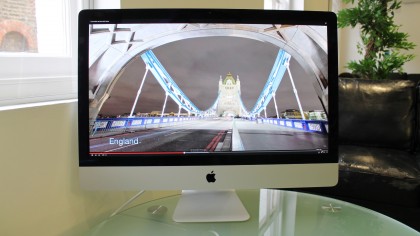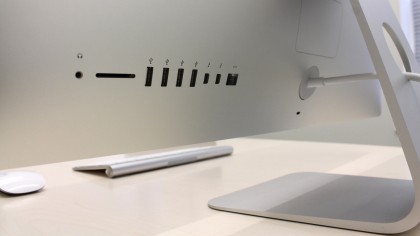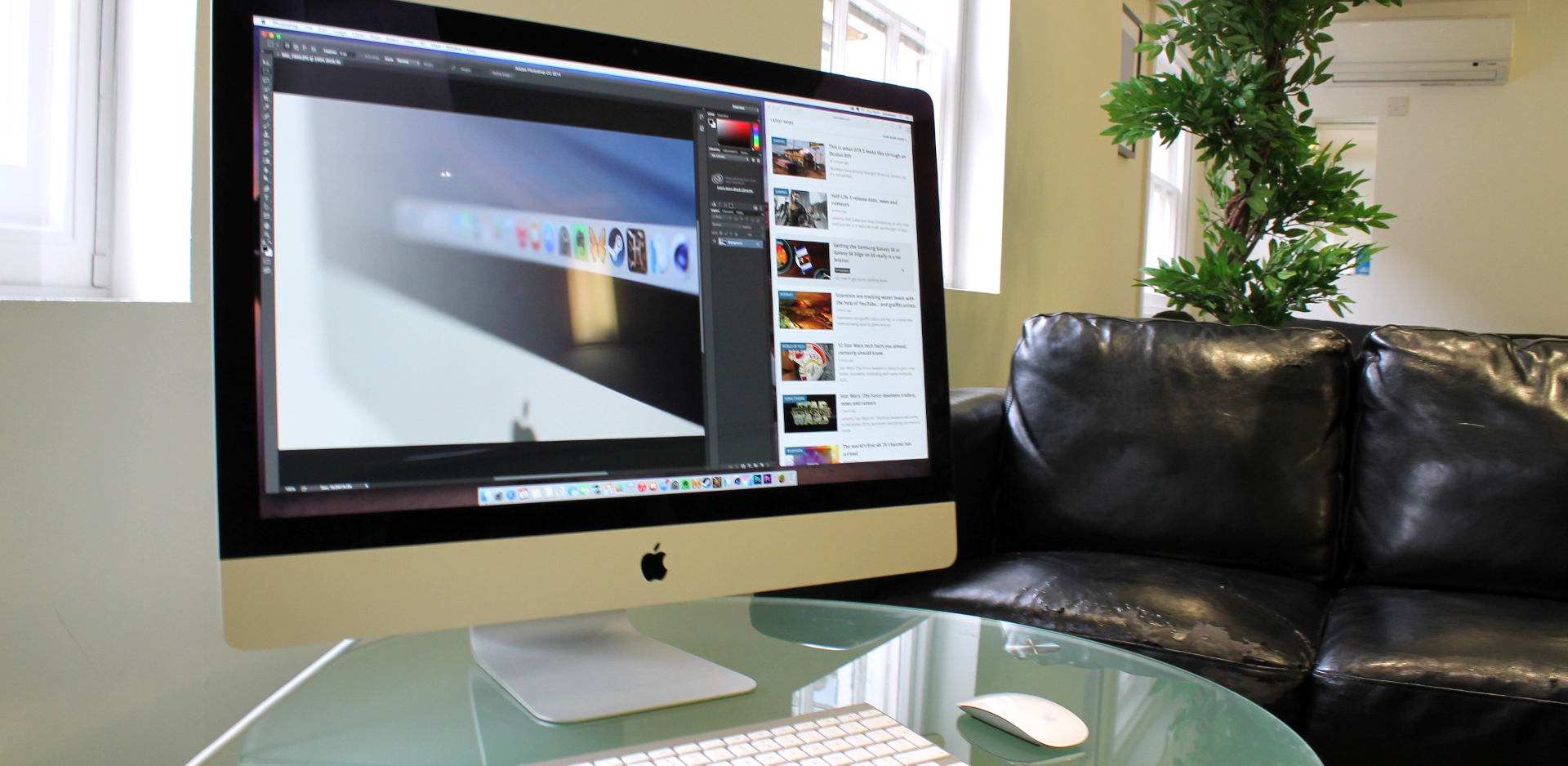Why you can trust TechRadar
The iMac with Retina 5K display's design is unchanged from the previous-generation 27-inch iMac, and it's still one of the most attractive computers around. The processor, graphics, memory, storage and other components are housed in the area behind the display, which measures 5mm thick along the bottom edge and gets wider toward the centre of the display's back panel.
It's impossible to tell just by looking, but the new iMac has received a re-engineered panel that measures 1.4mm and apparently uses 30% less power than the non-Retina 27-inch iMac. According to Apple, this was done using a combination of energy-saving technology borrowed from the iPad Air 2 that separates pixels more effectively to better conserve energy, in addition to switching to a more energy-efficient type of LED.

The iMac 5K with Retina display is also available with a VESA stand for mounting onto a wall. The default stand doesn't provide much flexibility, and can be tilted forwards or backwards by around 60 degrees. There's no height adjustment either, meaning you'll probably want to pick up a third-party iMac stand rather than balancing what is an expensive computer on a wobbly pile of books.
Here is the spec sheet of the base model provided to TechRadar for review:
Specifications
- Processor: Intel Quad-Core Intel Core i5 processor (Turbo Boost up to 3.9GHz)
- Operating System: OS X 10.10.3 Yosemite
- Memory: 8GB of 1600MHz DDR3
- Display: 27-inch (diagonal) Retina IPS display (5,120 x 2,880)
- Graphics: AMD Radeon R9 M290X GPU with 2GB of DDR5 memory
- Storage: 1TB Fusion Drive
- Camera: FaceTime HD Camera
- Networking: 1/10/1000BASE-T Gigabit Ethernet, 802.11a/b/g/n Wi-Fi
- Connectivity: 1 x headphone, 1 x SDXC card slot, 4 x USB 3.0, 2 x Thunderbolt 2, 1 x Mini DisplayPort, Support for DVI, VGA and dual-link DVI (adapters sold separately)
- Audio: Stereo speakers; dual microphones; headphone port/optical digital audio output (mini-jack)
- Dimensions: 51.6 x 65 x 20.3 (H x W x D)
- Weight: 9.54 kg (21 pounds)
The base Retina iMac comes with a 3.5GHz quad-core Intel Core i5 CPU (Turbo Boost to 3.9GHz), and can be upgraded to a 4.0GHz quad-core Intel Core i7 (Turbo Boost to 4.4GHz). Opting for the Core i7 upgrade gives you the advantage of Hyper Threading, where each of the CPU's four cores can run two threads for eight virtual cores, something the quad-core i5 is unable to do.
Main memory starts at a meagre 8GB, but can be increased to 16GB or 32GB - for a cost. In terms of storage, the iMac comes with a 1TB Fusion Drive that combines a hard drive with a solid state drive for regularly accessed data. Alternatively, the iMac can be configured with a 3TB Fusion Drive or 256GB/512GB/1TB of solid-state storage.

For graphics, the base iMac is configured with an AMD Radeon R9 M290X - a dedicated mobile GPU that comes with 2GB of GDDR5 vRAM. For better handling GPU-intensive applications, it can be upgraded to be a Radeon R9 M295X with 4GB of DDR5 vRAM.
The iMac comes with OS X Yosemite 10.10.3 installed, which has been designed especially for high pixel-density displays. However, while Apple's own apps and most creative packages are optimised for high-DPI resolutions, many still aren't - and you might find yourself running into blurry images and icons if you come across ones waiting to be updated.
The OS can also cause some issues when it comes to UI elements looking small - even when running in Retina-optimised mode. The controls in apps such as photo editing suites can be tiny and way off to the side (it's here that keyboard shortcuts can come in handy).
Upgradability
While Apple's iMac line isn't designed to be taken apart and modified, like previous iMacs the Retina iMac does present some scope to be upgraded. The easiest component to change RAM, as modules are easily accessible thanks to upgrade slots at the rear of the machine.
As iFixit notes in its teardown of the Retina iMac, you'll need a steady hand, a set of custom tools and some spare time on your hands should you want to prise it open and replace components such as the hard drive and CPU.
iFixit rated the Retina iMac 5 out of 10 for its upgrdability difficulty (with 10 being the easiest to repair), noting the trickiness of prising the display's glass and LCD apart (they are now sealed together rather than held together by magnets), and the need to apply fresh double-sided sticky tape to reseal the iMac into its original condition once finished.

